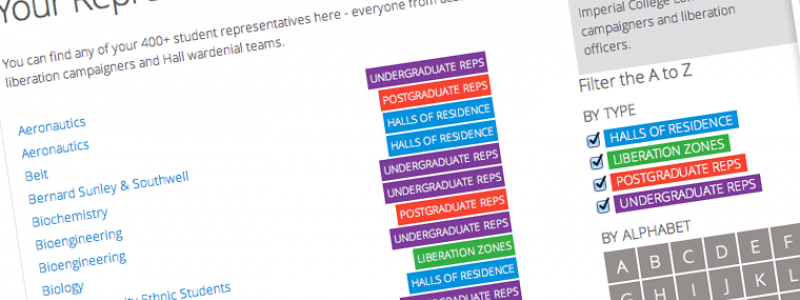On Monday, the Provost emailed all taught students with an update about remote timed assessments. Included in this was the safety net that the Union pushed the College to adopt – you can find it here. Many of you found this confusing and have been asking us and your reps a lot of questions about what it all means. We’ve provided a ‘plain English’ version of the policy that we hope makes more sense, and provided some simple illustrative examples.
Explaining the safety net
For all undergraduate students, apart from MBBS students (due to the need to satisfy GMC regulatory requirements), but including those on their iBSc year.
1. Calculate your safety net mark. This is the weighted average of all assessment taken across this academic year and all previous academic years up to and including 13th March 2020*. See examples below.
2. Do remote, timed assessments, coursework and projects. These are marked and moderated as normal. Additionally, enhanced analytics will be used to check these marks for consistency.
3. Then, if you’ve met the requirements to pass the year, make the safety net check:
- Final year students: if the post-Covid assessments have caused your degree average to go below your safety net mark, then you will be awarded your safety net mark as your entire degree average.
- Continuing students: if your 2019/20 year average is below your safety net mark, then you will instead be awarded your safety net mark as your 2019/20 year average
- First years: for now, your first year marks will be as they stand. However, your first year won’t count towards your final degree mark if it pulls the weighted average of your future years down. It can only make your average go up.
*If most of the work for a coursework was done before this date but the submission date is after, it’s likely that this will be included in the pre-Covid safety net mark.
For postgraduate taught students
There isn’t a simple formulation to use for all students, and exactly how the safety net will work will depend on what’s sensible for your course. In general, the safety net is expected to be applied as far as possible and it will still be necessary to do remote, timed assessments and meet requirements to pass.
Examples
You can find the year and module weightings for your degree in the programme specification here. Be sure to select your correct year of entry from the menu on the left. These are illustrative examples and it may not be so simple to work out yours!
Disclaimer: assessments that you have done so far this year are moderated at the final exam board at the end of the year, therefore could change which could slightly change your safety net mark. For the examples below, the average marks stated as averages for assessments so far this year should be assumed to have been moderated and confirmed at the final exam board.
Example 1: continuing student
Shervin is a 3rd year Physics MSci undergraduate. The ratio of weightings of Physics MSci years is 1:3:4:5 (i.e. the 4th year is worth 5x the 1st year). His first two year marks were 63 and 65, and he’s achieved a weighted average of 70 across assessments this year until 13th March that are worth 25% of his third year.
His safety net mark is therefore (1x63 + 3x65 + 0.25x4x70)/(1 + 3 + 0.25x4) = 65.6
In the remote timed assessments (worth the remaining 75% of his year), Shervin scores a weighted average of 61. This means that his unmitigated 2019/20 average is (0.25x70 + 0.75x61) = 63.3.
Therefore, as his safety net mark is higher than his unmitigated 2019/20 average mark, Shervin is awarded his safety net mark of 65.6 for his 2019/20 academic year.
Example 2: final year student
Abs is a 4th year Physics MSci undergraduate. The ratio of weightings of Physics MSci years is 1:3:4:5 (i.e. the 4th year is worth 5x the 1st year). His first three year marks were 63, 65 and 64, and he’s achieved a weighted average of 70 across assessments this year until 13th March that are worth 20% of his fourth year.
His safety net mark is then (1x63 + 3x65 + 4x64 + 0.20x5x70)/(1 + 3 + 4 + 0.20x5) = 64.9
In the remote timed assessments (worth the remaining 80% of his year), Abs scores 58. This means that his unmitigated 2019/20 average is (0.20x70 + 0.80x58) = 60.4.
Therefore, his unmitigated final degree weighted average is (1x63 + 3x65 + 4x64 + 5x60.4)/(1 + 3 + 4 + 5) = 62.8.
Therefore, as his safety net mark is higher than his unmitigated final degree weighted average, Abs is awarded his safety net mark of 64.9 as his final degree average.
Example 3: first year student
Ashley is a 1st year Physics MSci undergraduate. The ratio of weightings of Physics MSci years is 1:3:4:5 (i.e. the 4th year is worth 5x the 1st year). He currently does not have a safety net mark as he has no previous year assessments.
This year, across pre-Covid and post-Covid assessments, Ashley scores a weighted average of 59. This is his 2019/20 average year mark, for now. In his remaining three years, Ashley scores 65, 71 and 67 successively.
Therefore, his degree average including first year is (1x59 + 3x65 + 4x71 + 5x67)/(1 + 3 + 4 + 5) = 67.2. His degree average not including first year is (3x65 + 4x71 + 5x67)/(3 + 4 + 5) = 67.8. His overall degree mark not-including first year is higher than that including first year, therefore he is awarded the higher mark of 67.8 at the end of his degree.



